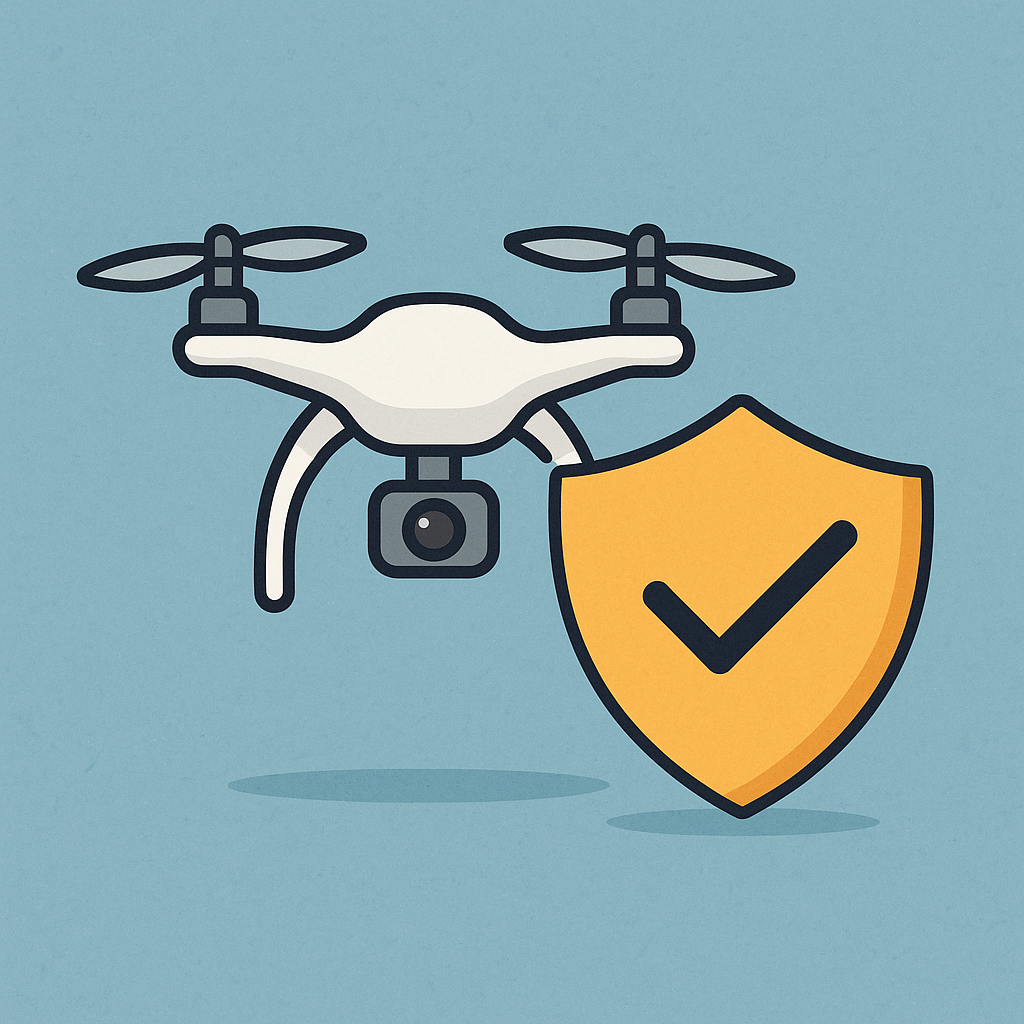Nobody wants to be the next highlight on the evening night news. The rapid expansion of drone technology has brought significant advancements in industries ranging from construction and agriculture to energy and infrastructure inspection. However, with the increased use of drones, the need for effective safety management systems and structured incident response protocols has become more critical than ever. Drones are meant to bring safety and reduce risk in the workplace. Here is a quick overview of how to use drones safely in your operations.
The Importance of Safety in Drone Operations
Drones operate in complex airspace environments where interactions with manned aircraft, ground personnel, and structures must be managed carefully. Without proper safety procedures, minor operational errors can escalate into severe incidents, endangering lives and property. A well defined safety management system provides a framework for identifying, assessing, and mitigating risks before they lead to incidents.
Key Components of a Drone Safety Management System
An effective safety management system for drone operations must be comprehensive and proactive. Risk assessment and mitigation are the foundation of operational safety. Before each flight, operators should evaluate environmental conditions, potential airspace conflicts, and sitespecific hazards. Identifying risks allows for the implementation of control measures such as geofencing, altitude restrictions, and designated flight corridors to minimize potential dangers.
Communication and coordination with other airspace users play a crucial role in avoiding conflicts. Drone operators should establish clear lines of communication with air traffic control, nearby aviation stakeholders, and site personnel. Pre coordination with local airspace users, including agricultural pilots and emergency response teams, enhances situational awareness and reduces the likelihood of operational conflicts. Maintaining realtime monitoring tools further aids in detecting potential airspace intrusions and ensuring safe operations.
Incident response protocols are an essential part of any drone safety program. A well structured response plan should outline immediate actions in case of an incident, including emergency procedures, documentation requirements, and de escalation strategies. Operators must be trained in handling various emergency scenarios such as lost link situations, unexpected airspace intrusions, and in flight equipment malfunctions. Following an incident, a thorough review should be conducted to analyze contributing factors, identify areas for improvement, and implement corrective actions.
Best Practices for Incident Prevention and Response
Effective drone safety begins with thorough pre flight planning. Operators must check Notices to Air Missions (NOTAMs), assess temporary flight restrictions, and confirm local airspace conditions before deploying a drone. Ensuring coordination with local aviation stakeholders helps avoid unexpected airspace conflicts. Establishing contingency plans for potential disruptions adds another layer of preparedness.
During flight operations, maintaining strict adherence to safety protocols is vital. Operators should comply with altitude restrictions, maintain visual line of sight when required, and utilize available technology to enhance airspace awareness. Using onboard detect and avoid systems, real time monitoring solutions, and remote sensing technology can significantly improve situational awareness and mitigate risks. Keeping detailed flight logs and operational records also supports accountability and continuous learning.
Post incident analysis is a critical component of an effective safety strategy. Every incident, whether a near miss or an operational deviation, presents an opportunity to refine safety practices. Conducting a comprehensive review helps pinpoint root causes, update standard operating procedures, and integrate lessons learned into future operations. Implementing technological solutions such as ADSB tracking and real time traffic management systems further enhances safety and operational efficiency.
Regulatory Compliance and Industry Standards
Adhering to FAA regulations and industry best practices ensures a structured and legally compliant approach to drone operations. Compliance with Part 107 for commercial drone operations in the U.S. establishes a baseline for safe flight practices. Aligning operations with industry guidelines from organizations such as AUVSI and ASTM International helps enhance safety protocols and professional credibility.
As the drone industry continues to evolve, prioritizing safety through effective incident management and proactive risk mitigation remains essential. A robust safety management system, strong communication practices, and a culture of continuous improvement will help drone operators navigate complex airspace environments while minimizing risks. By fostering a commitment to safety and operational excellence, drone professionals can contribute to a more efficient and responsible integration of unmanned aerial systems into shared airspace.
For additional best safety practices visit /https://www.flyingmag.com/guides/drone-safety-tips/
Interested in how drones can also help reduce safety risks?

